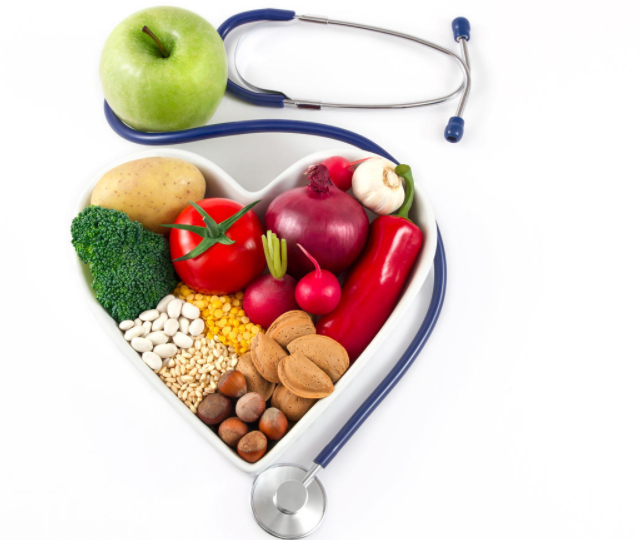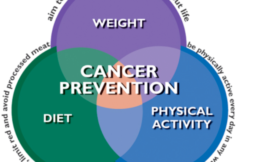There is lots of ways we can protect our heart. Quit smoking is one of the best way among these. The foods we eat also important factor in heart health, so here ae some diet tips which may help you stay heathy with a heathy heart.
Control your portion size
How much you eat is just as important as what you eat. Overloading your plate, taking seconds and eating until you feel stuffed can lead to eating more calories than you should. Portions served in restaurants are often more than anyone needs.
Use a small plate or bowl to help control your portions. Eat larger portions of low-calorie, nutrient-rich foods, such as fruits and vegetables, and smaller portions of high-calorie, high-sodium foods, such as refined, processed or fast foods. This strategy can shape up your diet as well as your heart and waistline.
Keep track of the number of servings you eat. The recommended number of servings per food group may vary depending on the specific diet or guidelines you’re following. A serving size is a specific amount of food, defined by common measurements such as cups, ounces or pieces. For example, one serving of pasta is about 1/3 to 1/2 cup, or about the size of a hockey puck. A serving of meat, fish or chicken is about 2 to 3 ounces, or about the size and thickness of a deck of cards. Judging serving size is a learned skill. You may need to use measuring cups and spoons or a scale until you’re comfortable with your judgment.
Be smart about fats
If you are concerned about your heart health, rather than avoiding fat in your diet, try replacing unhealthy fats with good fats. Some of the most important improvements you can make to your diet are to:
Cut out artificial trans fats. As well as raising your LDL, or “bad” cholesterol level, which can increase your risk for heart attack and stroke, artificial trans fat also lowers your levels of HDL or “good” cholesterol, which can put you at increased cardiovascular risk. Many countries have effectively outlawed the use of artificial trans-fats in commercially prepared food, but it’s worth checking labels and avoiding anything with “partially hydrogenated” oil in the ingredients, even if it claims to be “trans fat-free.
Limit saturated fats. Saturated fats are mainly found in tropical oils, dairy, and red meat and should be limited to no more than 10% of your daily calorie intake. Enjoy dairy in moderation and vary the protein sources in your diet, opting for fish, skinless chicken, eggs, and vegetarian sources of protein where you can.
Eat more healthy fats. Eating foods rich in monounsaturated and polyunsaturated fat can improve blood cholesterol levels and lower your risk of heart disease. Eat omega 3 fatty acids every day, from fatty fish such as salmon, trout, or herring, or from flaxseed, kale, spinach, or walnuts. Other sources of healthy fats include olive oil, avocados, nuts, and nut butters.
Don’t replace fat with sugar or refined carbs
When cutting back on heart-risky foods, such unhealthy fats, it’s important to replace them with healthy alternatives. Replacing processed meats with fish or chicken, for example, can make a positive difference to your health. But switching animal fats for refined carbohydrates, though—such as replacing your breakfast bacon with a donut or sugary cereal—won’t do anything to lower your risk for cardiovascular disease.
Your body doesn’t need any added sugar—it gets all it needs from the sugar that naturally occurs in food. Sugary food and refined carbs just add up to a lot of empty calories that are as bad for your heart as they are for your waistline.
Instead of sugary soft drinks, white bread, pasta and processed foods like pizza, opt for unrefined whole grains like whole wheat or multigrain bread, brown rice, barley, quinoa, bran cereal, oatmeal, and non-starchy vegetables.
Eat more vegetables and fruits
Vegetables and fruits are good sources of vitamins and minerals. Vegetables and fruits are also low in calories and rich in dietary fiber. Vegetables and fruits, like other plants or plant-based foods, contain substances that may help prevent cardiovascular disease. Eating more fruits and vegetables may help you cut back on higher calorie foods, such as meat, cheese and snack foods.
Featuring vegetables and fruits in your diet can be easy. Keep vegetables washed and cut in your refrigerator for quick snacks. Keep fruit in a bowl in your kitchen so that you’ll remember to eat it. Choose recipes that have vegetables or fruits as the main ingredients, such as vegetable stir-fry or fresh fruit mixed into salads.
Focus on high-fiber food
A diet high in fiber can lower “bad” cholesterol and provide nutrients that help protect against heart disease. As an added bonus, it may also help you to lose weight. Since fiber stays in the stomach longer than other foods, the feeling of fullness will stay with you much longer, helping you to eat less. Fiber also moves fat through your digestive system quicker so less of it is absorbed. And when you fill up on fiber, you’ll also have more energy for exercising.
Insoluble fiber is found in whole grains, wheat cereals, and vegetables such as carrots, celery, and tomatoes.
Soluble fiber sources include barley, oatmeal, beans, nuts, and fruits such as apples, berries, citrus fruits, and pears.
Reduce the sodium in your food
Eating a lot of sodium can contribute to high blood pressure, a risk factor for cardiovascular disease. Reducing sodium is an important part of a heart-healthy diet. The American Heart Association recommends that:
- Healthy adults have no more than 2,300 milligrams (mg) of sodium a day (about a teaspoon of salt)
- Most adults ideally have no more than 1,500 mg of sodium a day
Although reducing the amount of salt you add to food at the table or while cooking is a good first step, much of the salt you eat comes from canned or processed foods, such as soups, baked goods and frozen dinners. Eating fresh foods and making your own soups and stews can reduce the amount of salt you eat.
If you like the convenience of canned soups and prepared meals, look for ones with reduced sodium. Be wary of foods that claim to be lower in sodium because they are seasoned with sea salt instead of regular table salt — sea salt has the same nutritional value as regular salt.
Another way to reduce the amount of salt you eat is to choose your condiments carefully. Many condiments are available in reduced-sodium versions, and salt substitutes can add flavor to your food with less sodium.





